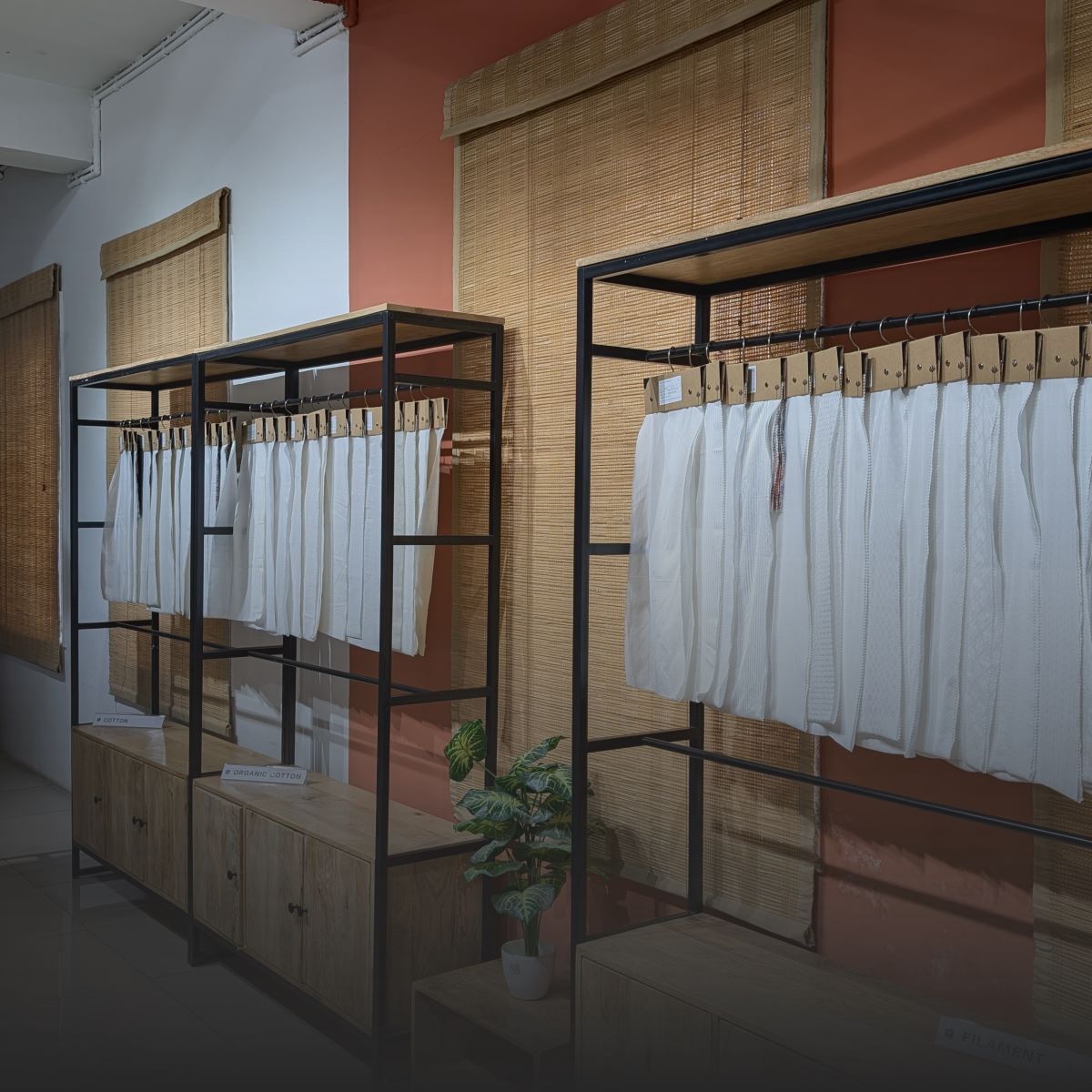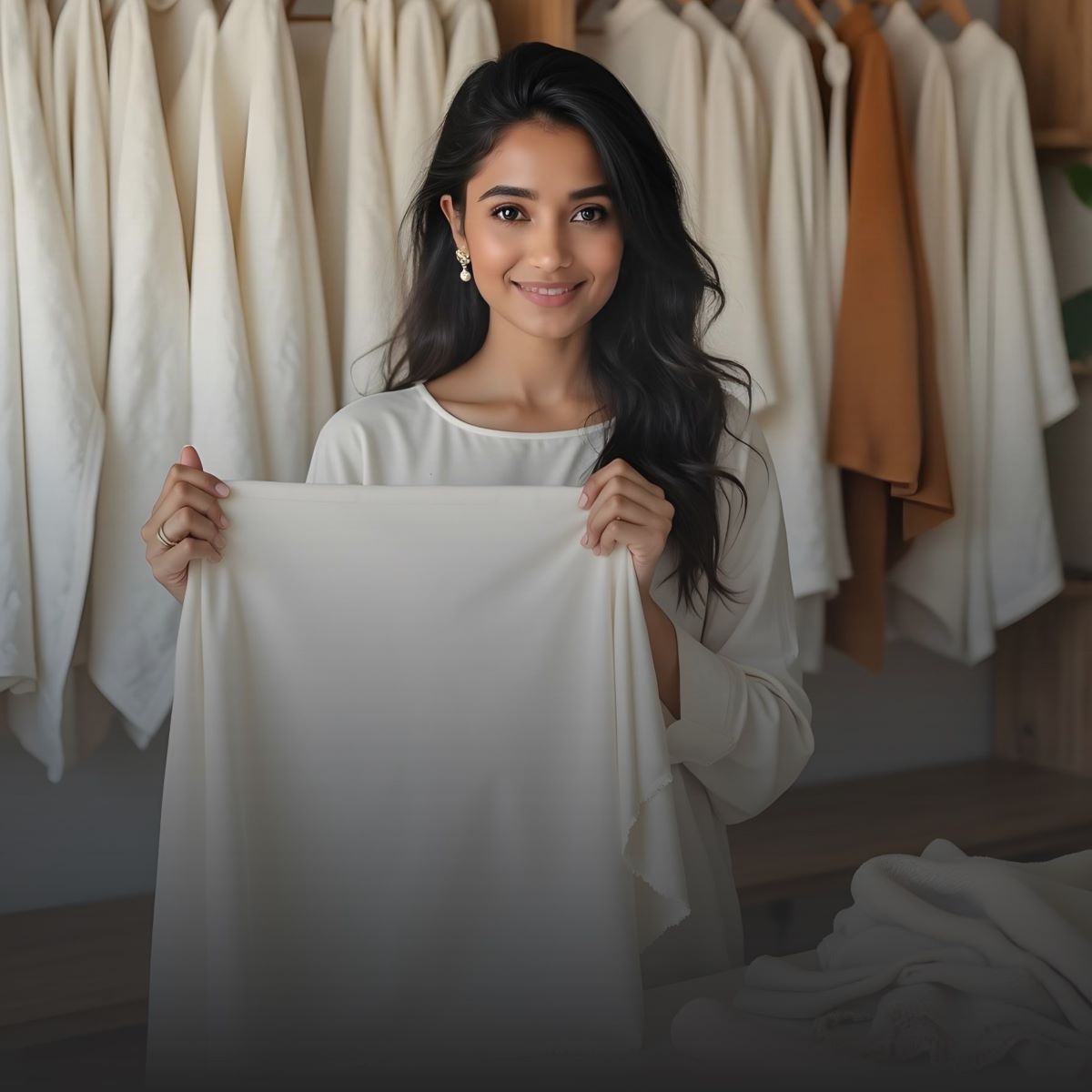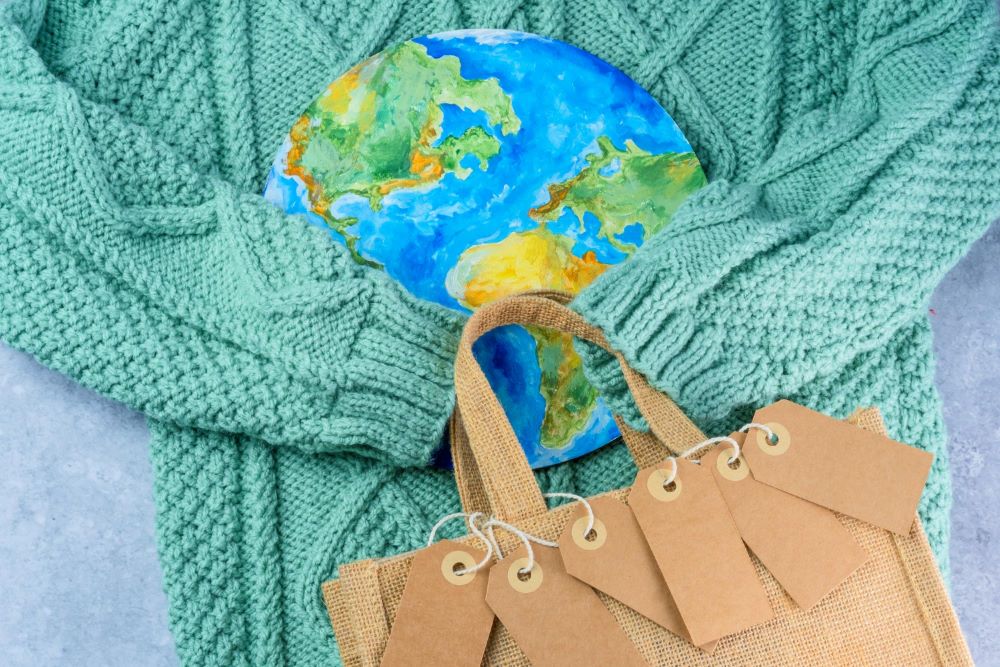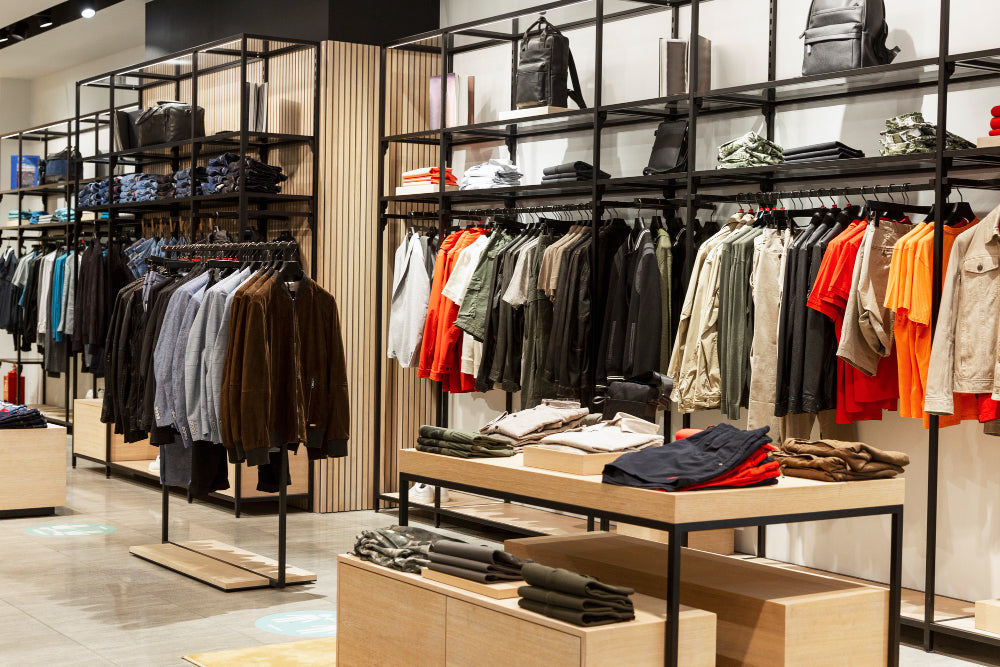The textile industry is one of the biggest polluters in the world. It uses massive amounts of water and energy. It also releases harmful chemicals into the environment.
People are now more aware of these issues and demand eco-friendly alternatives. This is where sustainable fabrics come in. These fabrics are made with a focus on reducing environmental impact.
To see if a fabric is truly sustainable, look for eco-friendly standards. These are guidelines that make sure the fabric meets high environmental and social goals. They help shoppers make better, eco-friendly choices.
In this blog, we will explore:
- What makes a fabric sustainable?
- Key international eco-friendly standards.
- How companies like Fabriclore are helping drive change.
By the end, you’ll understand why choosing sustainable fabrics is important for a greener future.
You Can Read This For More Related Information : A Guide to Sustainable Fabrics
1. What Are Sustainable Fabrics? Understanding the Basics

Sustainable fabrics are textiles made with a focus on reducing their environmental impact. Unlike traditional fabrics, which can harm the planet through high water usage, chemical waste and pollution, sustainable fabrics aim to be eco-friendly from start to finish.
What sets them apart?
-
Made from eco-friendly materials: These fabrics use natural, renewable resources like organic cotton, hemp or bamboo. They require fewer pesticides and fertilizers to grow.
- Less water and energy use: Sustainable fabrics are produced using less water and energy, reducing their carbon footprint.
- Biodegradable or recyclable: Many sustainable fabrics break down naturally or can be recycled into new products, reducing waste in landfills.
These materials make sustainable fabrics a better choice for the environment. By choosing them, you reduce the harm caused by traditional textiles.
2. Why Sustainable Fabrics Matter: The Environmental Impact of Traditional Fabrics

- Water pollution: About 20% of global clean water pollution comes from the dyeing and finishing of textile products.
- Waste production: Every year, 92 million tonnes of textile waste are generated globally.
- Fast fashion: Between 2000 and 2015, production doubled, but the lifespan of garments decreased by 36%.
- Plastic pollution: Clothing and textiles account for 11% of plastic waste.
- Recycling issues: As of 2023, only 8% of textile fibers are made from recycled sources.
These numbers highlight the need for change. Sustainable fabrics can help reduce pollution, waste and resource consumption. By choosing eco-friendly options, we can start to undo the damage caused by traditional textile production.
You Can Read This For More Related Information : Types of Sustainable Fabrics and Why They Matter
3. Key Characteristics of Sustainable Fabrics: What Makes Them Eco-Friendly?

Sustainable fabrics have key traits that make them eco-friendly:
- Biodegradable: These fabrics break down naturally, reducing waste in landfills. Unlike synthetic fibers, they do not persist in the environment for years.
- Low Environmental Impact: Sustainable fabrics are produced with less water, energy and harmful chemicals, making them less damaging to the planet.
By choosing fabrics with these characteristics, you reduce the environmental harm caused by textiles. These fabrics help move the industry towards a more sustainable future.
4. The Role of Eco-friendly Certifications: Ensuring Authentic Sustainability

Third-party certifications make sure fabrics meet eco-friendly standards. They are important because they help you trust that a fabric is really sustainable. Without them, it's hard to know for sure.
Why certifications matter:
- Trust and transparency: Certifications show that a fabric meets environmental and social rules.
- Consumer confidence: They help you make better choices by making sure the fabric is truly eco-friendly.
- Accountability: They make brands follow higher standards, ensuring better practices in how fabrics are made.
5. Global Organic Textile Standard (GOTS): The Gold Standard for Organic Fabrics

GOTS certification is the leading standard for organic fabrics. It ensures that textiles are made from organic fibers and produced responsibly.
Key features of GOTS certification:
- Organic fibers: Fabrics must be made from at least 70% organic materials like cotton, wool or hemp. These fibers are grown without harmful pesticides or synthetic fertilizers.
- Eco-friendly dyeing: GOTS-approved fabrics use dyes and chemicals that meet strict environmental criteria. These dyes are less harmful to the environment.
- Ethical labor practices: GOTS ensures fair wages, safe working conditions and no child labor in the production process. This guarantees workers' rights are respected.
GOTS provides a clear and reliable way to identify textiles that are truly sustainable. It ensures your choice supports both the environment and ethical labor practices.
6. OEKO-TEX Standard: Ensuring Safe and Sustainable Fabrics

OEKO-TEX is a certification that ensures fabrics are free from harmful substances. It focuses on testing textiles for toxic chemicals that can harm both people and the environment.
Key aspects of OEKO-TEX certification:
-
No harmful chemicals: Fabrics are tested for substances like pesticides, heavy metals and formaldehyde. These chemicals can cause skin irritation or long-term health problems.
-
Safety for all: The standard ensures that fabrics are safe for babies, children and adults alike. It checks textiles at every stage, from raw materials to the finished product.
- Environmental protection: OEKO-TEX promotes the use of sustainable materials and processes that have minimal impact on the environment.
When you choose OEKO-TEX certified fabrics, you are selecting textiles that are safer for both you and the planet. It’s a simple way to avoid harmful chemicals in the clothes you wear.
7. Fair Trade Certification: Supporting Ethical Practices in Textiles

Fair Trade certification ensures that workers in the textile industry are treated fairly. It focuses on fair wages, safe working conditions, and eco-friendly practices.
Key points of Fair Trade:
- Fair wages: Workers are paid fairly, helping them support their families and improve their lives.
- Safe working conditions: Fair Trade makes sure factories follow safety rules, protecting workers from harm.
- Environmental responsibility: The certification promotes eco-friendly practices to reduce harm to the planet.
Choosing Fair Trade fabrics means you are supporting workers' rights and helping the environment. This certification ensures that the people making your clothes are treated well and that the planet is protected.
You Can Read This For More Related Information : 5 Sustainable fabrics you are looking out for
8. How Fabriclore is Leading the Way with Sustainable Fabrics

Fabriclore is committed to offering eco-friendly fabrics that meet the highest international standards. The company plays a key role in promoting sustainability in the textile industry.
What makes Fabriclore stand out:
-
Certified fabrics: Fabriclore offers over 300 certified fabrics, including LENZING™ Fabric, LIVA™ Fabric, BEMBERG™ CUPRO and Organic Cotton.
-
Sustainable options: Each fabric is carefully selected to meet global eco-friendly standards.
-
Complete fabric sourcing solutions: From custom digital printing and screen printing to hand block printing and solid dyeing, Fabriclore provides a full range of services to support sustainable fashion.
- Low MOQ and wholesale prices: Fabriclore makes sustainable fabrics accessible to businesses and designers by offering low minimum order quantities at wholesale prices.
Why choose Fabriclore?
- Wide range of eco-friendly, certified fabrics
- Custom solutions for fabric printing and dyeing
- Ready-for-Dyeing (RFD) fabrics available
- Support for sustainable fashion initiatives
By choosing Fabriclore, you support a business dedicated to providing sustainable fabric solutions for designers, companies and consumers.
You Can Read This For More Related Information : All About Sustainable Fabric - Fabriclore
9. Examples of Popular Sustainable Fabrics That Meet Eco-Friendly Standards

1. Organic Cotton
- Description: Grown without harmful pesticides or synthetic fertilizers.
- Benefits: Uses less water and energy compared to conventional cotton. It’s biodegradable and safe for the environment.
2. Tencel (Lyocell)
- Description: Made from sustainably sourced wood pulp and produced in a closed-loop system.
- Benefits: Requires less water and energy to produce. The closed-loop process recycles water and chemicals, minimizing waste.
3. Recycled Polyester
- Description: Made from post-consumer plastic bottles or other recycled polyester garments.
- Benefits: Reduces landfill waste and decreases the need for new petroleum-based resources. It is durable and versatile.
4. Hemp
- Description: A natural fiber grown with minimal water and no pesticides.
- Benefits: Strong, durable and biodegradable. Hemp production has a low environmental impact.
5. Bemberg™ Cupro
- Description: A regenerated fiber made from cotton waste.
- Benefits: Soft, breathable and biodegradable. It uses fewer chemicals during production compared to synthetic fibers.
These fabrics meet global sustainability certifications and offer eco-friendly alternatives without compromising on quality or style.
10. The Future of Sustainable Fabrics: Trends to Watch

Sustainable textiles are evolving rapidly. Here's what you need to know.
Biodegradable Fabrics
- Emerging Materials: Fabrics like mycelium-based Mylo are gaining popularity.
- Benefits: These materials decompose naturally, reducing landfill waste.
Circular Fashion
- Closed-Loop Systems: Brands are designing garments for reuse and recycling.
- Examples: H&M and Zara collect used clothes to recycle into new fabrics, promoting a circular economy.
Innovations in Dyeing Techniques
- Waterless Dyeing: Technologies like AirDye and CO₂-based methods eliminate the need for water in dyeing processes.
- Natural Dyes: Plant-based and microbial dyes are being used to reduce chemical pollution.
Evolving International Standards
-
Adaptation to Trends: Certifications are updated to include criteria for biodegradable materials and circular practices.
- Examples: Global standards are incorporating guidelines for sustainable dyeing and waste reduction.
11. How Consumers Can Make a Difference: Choosing Eco-friendly Fabrics

Consumers play a key role in promoting sustainability. Here are some practical tips for choosing eco-friendly fabrics:
1. Check for Certifications
- Look for labels like GOTS, OEKO-TEX and Fair Trade.
- These certifications ensure that fabrics meet high environmental and ethical standards.
2. Support Brands with Sustainable Practices
- Buy from brands that prioritize eco-friendly production processes.
- Ask about their supply chain and materials to make informed choices.
3. Buy Less, Choose Quality
- Invest in durable, high-quality items that last longer.
- Quality fabrics reduce the need for frequent replacements, minimizing waste.
Your purchasing decisions can shape the future of the fashion industry. By choosing eco-friendly fabrics, you encourage brands to adopt sustainable practices and reduce their environmental impact.
You Can Read This For More Related Information : Explore Sustainable Premium Fabrics for U.S. Apparel Manufacturers
Conclusion
Choosing sustainable fabrics is crucial for the environment and society. These fabrics meet international eco-friendly standards, ensuring less pollution, waste and harmful chemical use.
Supporting brands like Fabriclore helps create a more sustainable textile industry. They provide certified, eco-friendly fabrics that reduce the environmental impact of fashion. Your choices as a consumer matter. By buying sustainable fabrics, you push the industry toward better practices and a cleaner future.
You Can Read This For More Related Information : Sustainable Fabrics for Wholesale: Why Cotton, Linen and Bemberg are leading Eco-Friendly Fashion Brands
FAQs
What is the most sustainable and eco-friendly fabric?
The most sustainable fabrics are those made from natural, renewable resources with minimal environmental impact. Some of the top eco-friendly options include:
- Organic Cotton: Grown without harmful chemicals.
- Hemp: Requires little water and no pesticides.
- Tencel (Lyocell): Made from sustainably sourced wood pulp in a closed-loop system.
- Recycled Polyester: Made from recycled plastic bottles, reducing waste.
These fabrics are biodegradable or recyclable, reducing the strain on the environment.
What does GOTS certification mean?
GOTS (Global Organic Textile Standard) certification ensures fabrics meet high environmental and social standards. It guarantees:
- At least 70% organic fibers.
- Eco-friendly production processes.
- Ethical labor practices, including fair wages and safe working conditions.
GOTS helps you identify fabrics that are truly organic and sustainably produced.
What is ESG in the textile industry?
ESG stands for Environmental, Social and Governance. In the textile industry, it refers to:
- Environmental: Reducing the environmental impact, like lower water usage and pollution.
- Social: Ensuring fair wages and safe working conditions for workers.
- Governance: Maintaining transparency and ethical business practices.
What does 100% GOTS mean?
A fabric labeled 100% GOTS is made entirely from organic fibers. The production process meets all GOTS standards, ensuring:
- No synthetic chemicals or pesticides.
- Eco-friendly manufacturing and processing.
- Ethical working conditions.
This certification guarantees the fabric is fully organic and produced with respect for both people and the planet.
You Can Read This For More Related Information : Sustainable Fabric Options for the US Fashion Market
If you want to buy wholesale fabric in the USA, start by finding a trusted supplier that offers good quality fabric at affordable prices. Buying in bulk can help you save money, whether you’re a fashion designer, business owner, or someone who loves sewing. Choose a supplier that gives you many fabric options, low minimum order, and fast delivery. This way, you can easily get the materials you need for your projects.
We also happen to be a magnet for suggestions, and would love to catch yours….throw us yours on hello@fabriclore.com




